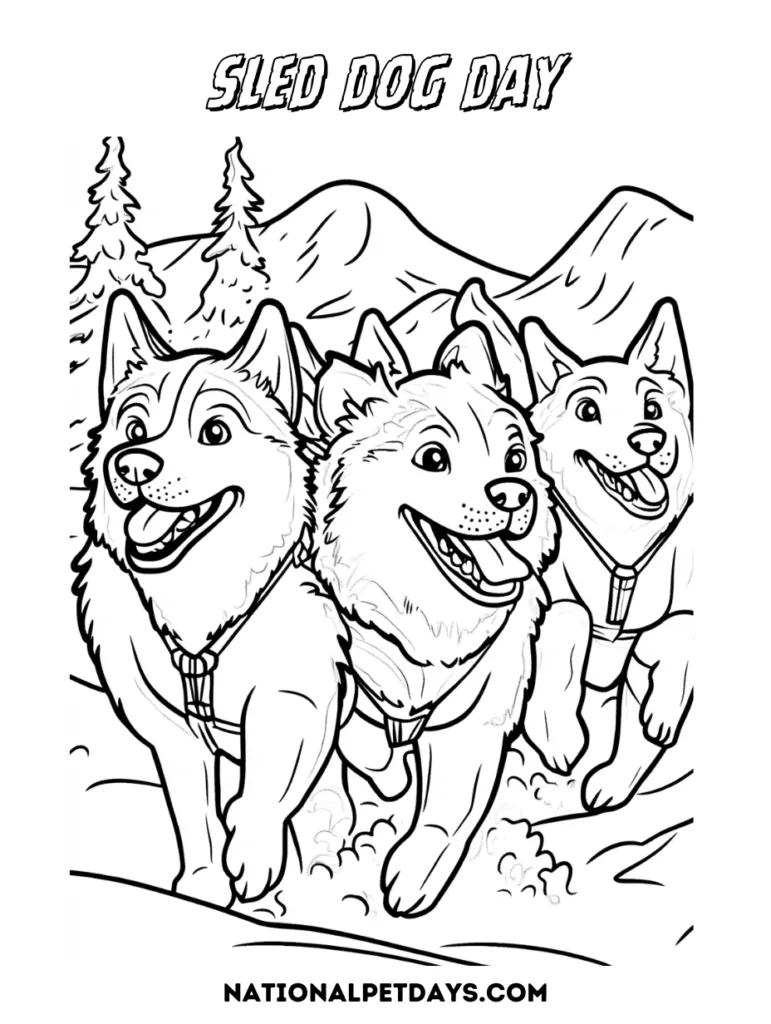For centuries, sled dogs have been integral to transportation and labor in some of the world’s coldest and harshest environments, from Alaska’s icy tundra to Canada’s snowy landscapes. These dogs are celebrated for their strength, endurance, and unwavering dedication to their work, which is honored annually on Sled Dog Day.

When is Sled Dog Day?
Sled Dog Day is celebrated each year on February 2.
Which Dog Breeds Are Used for Sledding?
Sled dogs are bred specifically for traits that make them ideal for their challenging roles: small feet that easily traverse snowy terrain, thick fur coats to shield them from freezing temperatures, and a keen intelligence that allows them to quickly learn and follow commands. The bond between a sled dog and its musher is profound—each relies on the other, forging a deep trust as they work in unison as a team.
When we think of sled dogs, wolf-like breeds often come to mind. The most common are Alaskan Malamutes and Siberian Huskies, though mixed breeds have also been used historically, especially during the Yukon gold rush. Today, purebred teams typically include breeds like:
- Samoyed
- Siberian Husky
- Alaskan Malamute
- Chinook
- Alaskan Husky
- Greenland Husky
- Various crossbreeds involving Pointers, Shepherds, Huskies, and wolves
Sled Dog Trivia
- Musher Leonhard Seppala, renowned for the 1925 Serum Run, worked with a team that included his famous lead dog, Togo, who ran the most dangerous and longest leg of the journey, covering over 261 miles at the age of 12. This heroic relay delivered lifesaving diphtheria antitoxin to Nome, Alaska, braving 674 miles of treacherous conditions.
- A sled dog can cover anywhere from 5 to 75 miles in a single day.
- Under ideal conditions, sled dogs can race at speeds of around 20 mph, though poor weather can slow them down to 7-10 mph.
- A well-trained sled dog maintains the proper tension on the tug line to effectively pull the sled.
- Sled dog teams are structured by roles: the lead dog sets the pace and is often a cherished household member; swing dogs help steer and stabilize the sled; wheel dogs assist in pulling the sled out of tough spots; and the remaining dogs are known as team dogs.
- Balto, another famed sled dog, led the final leg of the 1925 Serum Run and is immortalized in a Disney movie and with a statue in New York City’s Central Park.
- The Malamute, one of the most popular sled dog breeds, is celebrated annually on National Alaskan Malamute Day.
- The Iditarod Trail Sled Dog Race, held every March in Alaska, is a 1,000-mile endurance race known as the Last Great Race, though it has sparked controversy due to the numerous dog deaths that have occurred over the years.
Adopting a Sled Dog
If you’re interested in adopting a sled dog breed, several rescues specialize in these dogs, including Texas Sled Dog Rescue that specializes in sled dog breeds or Good Times Adventures Sled Dog Adoption which adopts retired sled dogs.
You can also search for adoptable Alaskan Malamutes, Siberian Huskies and more sled dog breeds online at:
